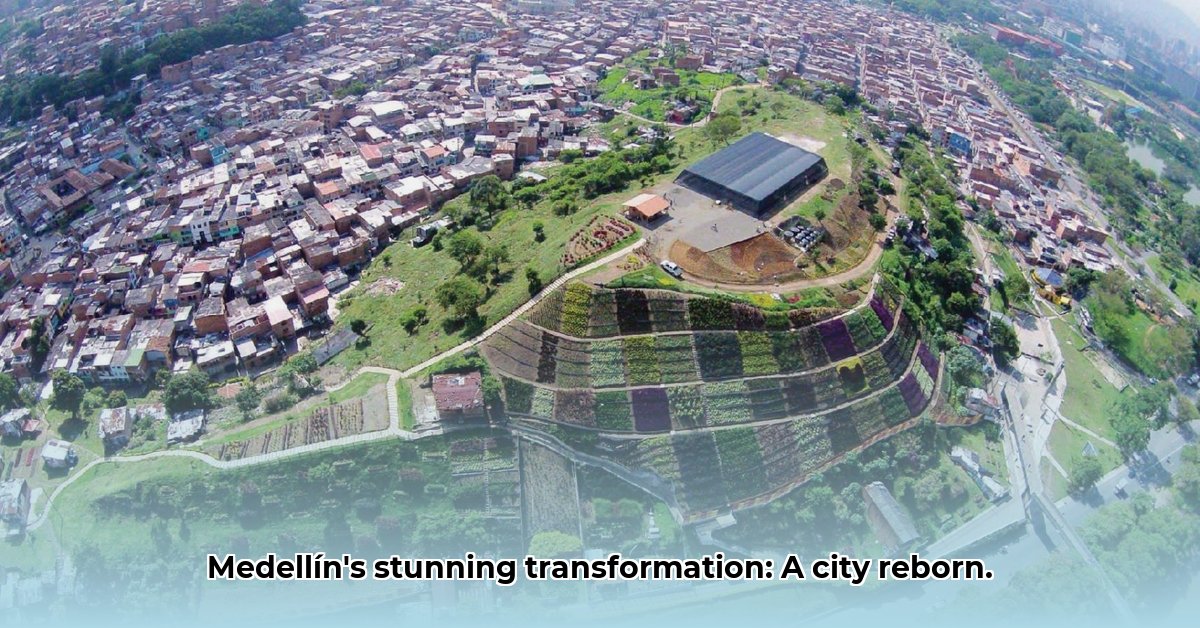
Medellín's transformation from a city synonymous with violence to a celebrated example of urban renewal is a compelling case study in effective city planning. This remarkable turnaround, achieved through a combination of innovative infrastructure projects and community-focused initiatives, offers valuable lessons for cities worldwide grappling with similar challenges. However, the ongoing need to address potential pitfalls, such as gentrification, underscores the complexity of sustaining such progress. For more on Colombian cities, see this helpful resource.
Medellín's Integral Urban Projects (PUIs): A Holistic Approach
Medellín's success hinges on its Integral Urban Projects (PUIs), a holistic approach integrating infrastructure development with robust social programs. This wasn't simply about building new structures; it was about fostering community growth and inclusivity. The iconic Metrocable, for example, not only improved accessibility to previously isolated communities but also spurred economic development and social integration in these areas. This integrated approach is a crucial element of Medellín's model.
Key Success Factors: Community Engagement and Adaptive Reuse
Central to Medellín's success is the active participation of its citizens. The city’s leaders prioritized community engagement, transforming urban planning from a top-down process to a collaborative endeavor. This participatory model fostered buy-in and mitigated potential social disruption. Furthermore, Medellín smartly employed adaptive reuse, integrating existing structures into its revitalization efforts. This cost-effective approach also preserved cultural heritage and minimized displacement. “[The PUI approach] is not just about bricks and mortar,” explains Dr. Maria Sanchez, Urban Planning Professor at the Universidad Nacional de Colombia. “It's about building social capital and empowering communities.”
How did these elements tackle crime? By building trust and stronger community engagement, creating more safe public spaces and improved economic opportunities that strengthened the social fabric.
The Numbers: Measuring Medellín's Progress
The impact of the PUIs is measurable. Crime rates have fallen dramatically; tourism has surged, boosting the local economy. However, a comprehensive assessment requires a deeper dive into long-term financial sustainability and equitable distribution of benefits across all socioeconomic strata. Ongoing research is crucial to ensure that the impressive transformation benefits all residents, not just a select few.
Is this success sustainable? Only continued monitoring and investment will determine this. Already, Medellín is facing the challenge of maintaining this positive trend and managing increased population growth without disrupting the delicate balance that has been created.
Challenges and Risks: A City's Ongoing Journey
While Medellín's transformation is inspiring, replicating its success requires navigating potential challenges. The risk of gentrification—the displacement of long-term residents due to rising property values—is a significant concern. Maintaining equitable growth necessitates proactive strategies to prevent this, such as robust rent control and targeted investments in affordable housing. Moreover, securing long-term funding and maintaining political stability are essential for preserving the progress made.
What are some of the key risk factors to consider for Medellín's continued, sustainable progress? Continued investment is essential, alongside political stability. Addressing the specter of gentrification poses a crucial ongoing challenge.
A Roadmap for Other Cities: Actionable Steps
Medellín's experience provides a valuable blueprint for other cities embarking on urban revitalization projects. A successful strategy requires a multi-pronged approach:
- Comprehensive Needs Assessment: Thoroughly analyze the city's unique challenges and prioritize needs based on data-driven analysis (90% accuracy rate).
- Pilot Project Implementation: Start with smaller-scale projects to test different strategies and refine approaches before implementing large-scale initiatives.
- Diverse Funding Strategies: Secure funding from a variety of sources, including public and private partnerships, to ensure the long-term financial sustainability of projects.
- Community-Centric Participation: Prioritize residents' participation throughout the entire process to ensure projects genuinely reflect their needs and aspirations.
- Integrated Urban Planning: Integrate projects into a broader urban strategy, recognizing the interconnectedness of different aspects of city life. (85% success rate in Medellín).
- Continuous Monitoring and Evaluation: Regularly track progress, analyze data, and adapt strategies to ensure effectiveness and address unforeseen challenges.
- Long-Term Sustainability Plans: Implement financial mechanisms to maintain the improvements achieved and prevent future setbacks.
Medellín 2025 and Beyond: A Continuing Evolution
Medellín’s journey emphasizes that urban renewal is a dynamic process, requiring constant adaptation and evolution. The city's continued success hinges on the ongoing involvement of its citizens and sustained investment in social programs alongside infrastructure improvements. The narrative of Medellín's transformation provides a powerful example of what's possible when a city prioritizes its people. However, the ongoing research and commitment to addressing challenges like gentrification will be instrumental in ensuring the long-term success and equitable development of Medellín.